Struggling with hair loss, dryness, or breakage during menopause? You’re not alone.
I remember the moment I first noticed the thinning—those patches along my hairline that made it look like I was going bald. I felt embarrassed, confused, and hesitant to wear my hair up. For me—and I know for so many of you—hair is so important. It’s part of our identity, our confidence.
But here’s the truth… there is absolutely no reason we have to accept thinning, brittle hair just because we’re getting older. Strong, thick, shiny hair is possible at any age!
In this post, I’m sharing the tried-and-tested methods that have helped me (and countless other women) support hair regrowth and reclaim healthier, more vibrant locks. Let’s dive in!
Need help navigating menopause? When you subscribe to the Busbee Style newsletter, you’ll have access to our BRAND NEW free menopause resource AND style resources to help you feel and look your best.
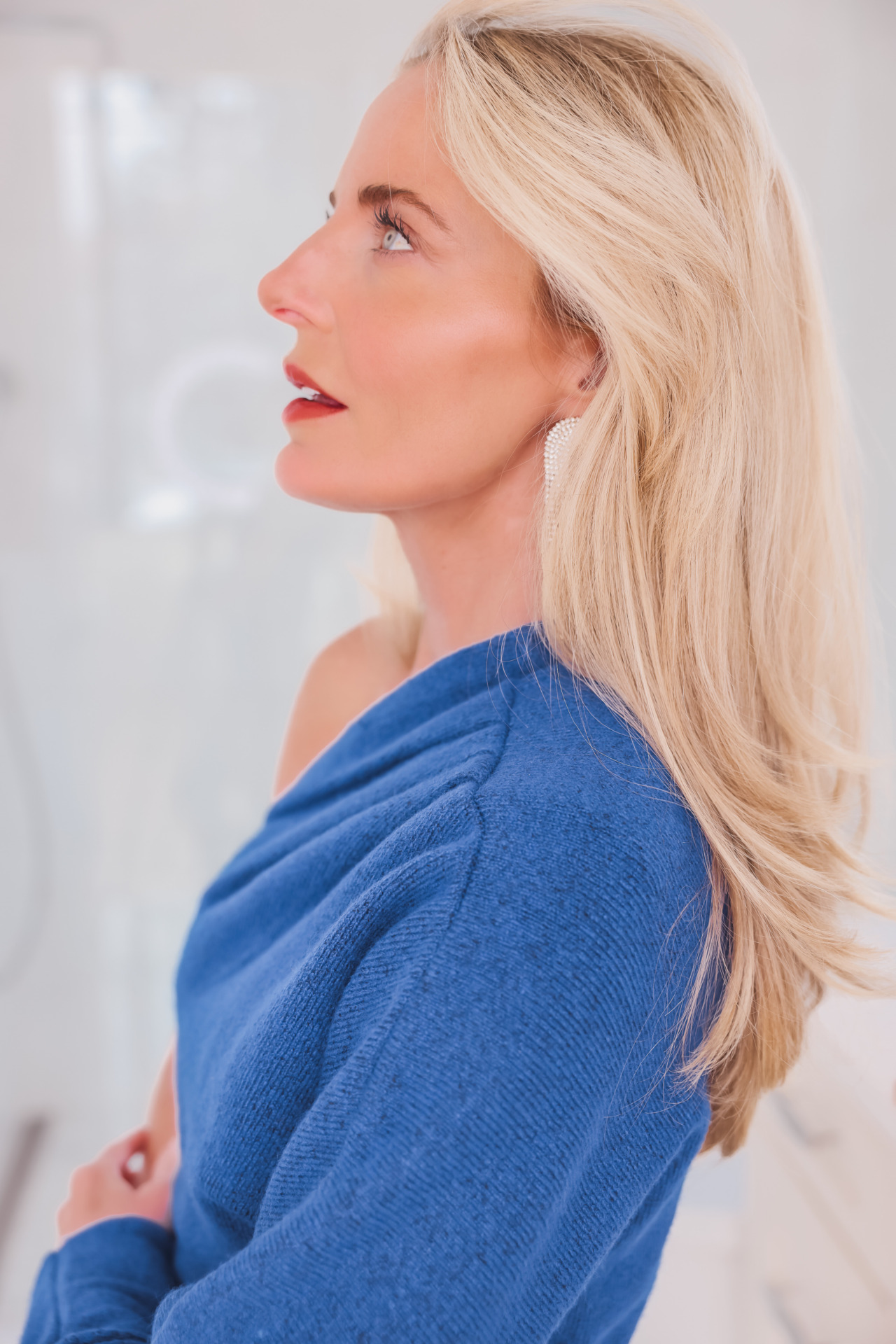
thick & healthy hair during menopause
💡 Why does menopause cause hair thinning?
During menopause women lose estrogen and progesterone, which can lead to slower hair growth, thinning, and increased shedding. These hormonal shifts also make hair more prone to dryness and breakage.
💡 Can hair grow back after menopause?
Yes! While hormonal changes impact hair health, the right health and haircare routine can support regrowth and prevent further thinning. I’ll share the many treatment options below.
💡 What are the best treatments for menopausal hair loss?
Some of the most effective treatments include biotin supplements, Nutrafol, collagen and Platelet-Rich Plasma or PRP treatments.
💡 How can I make my hair look fuller?
Volumizing shampoos, lightweight conditioners, root-lifting sprays, and strategic hairstyles (like soft layers or side parts) can instantly create the illusion of fuller hair.
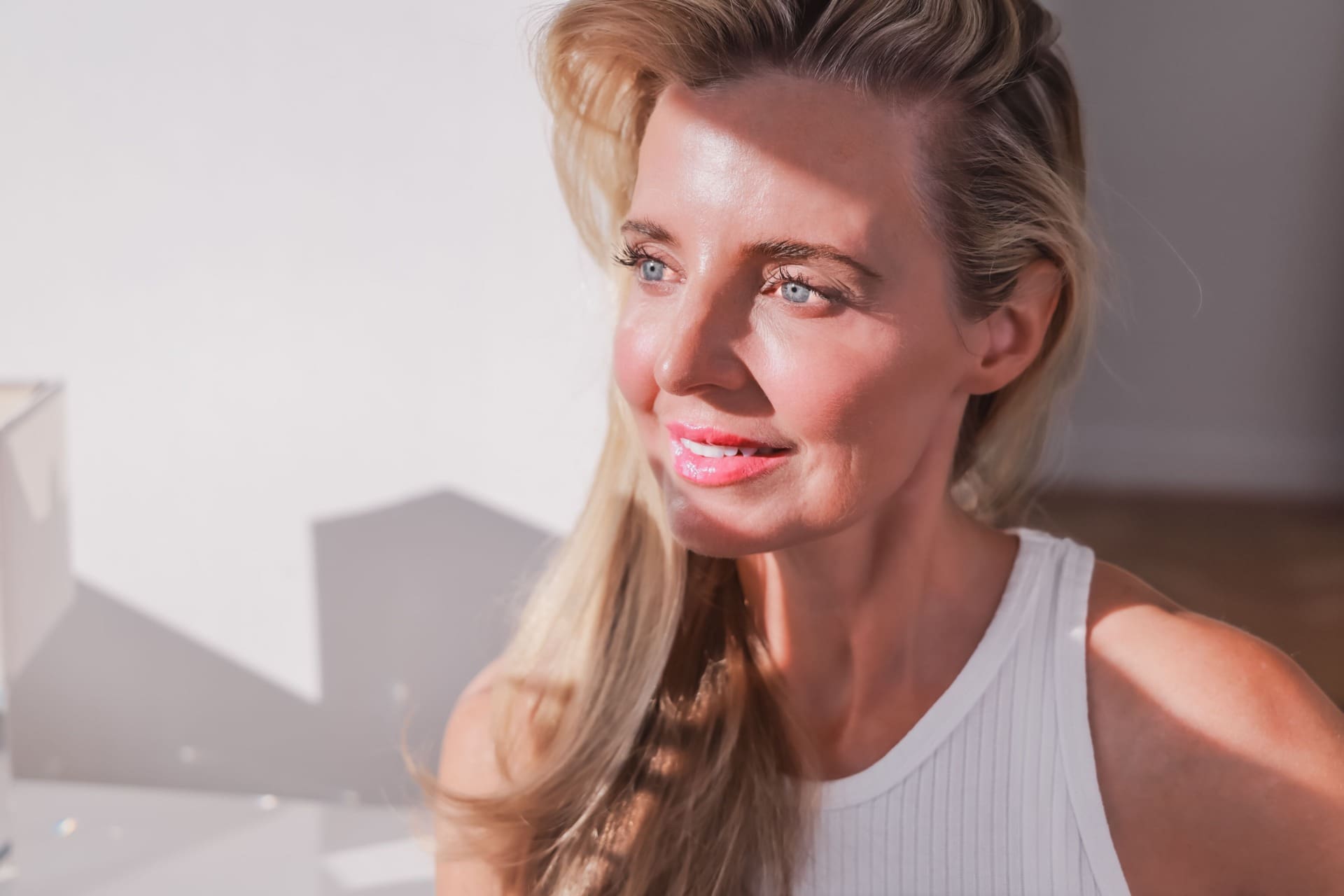
How to Deal with Hair Changes During Menopause
Manage Stress
It feels so unfair—you go through a lifetime of periods, cramps, childbirth and postpartum recovery (for some), surgeries, and body changes. Then, just when you think you’re free… menopause arrives, bringing a whole new set of challenges—including hair thinning, dryness, and breakage.
And to make things even trickier? There’s no one-size-fits-all solution for hair loss. What works for your best friend might not work for you.
But don’t give up! Regaining healthier, stronger hair often takes patience, trial, and error—which can be frustrating, especially when it feels like nothing is working. Managing stress is a crucial step in this journey. When estrogen levels drop, cortisol (the stress hormone) often rises, creating a vicious cycle that can contribute to further hair loss.
To help manage stress, you can try:
✔️ Regular movement (walks, yoga, strength training—whatever feels good for you)
✔️ Meditation or journaling to clear your mind
✔️ Talking to a therapist or trusted friend
✔️ Prioritizing sleep and hydration
✔️ Eating a balanced diet and avoiding common triggers like caffeine, alcohol, and spicy foods
Finding ways to reduce stress and support your overall well-being will not only help your hair—but your entire body—through this transition.

Less is More: Protecting Your Hair During Menopause
When it comes to caring for your hair during menopause, less can actually be more. That doesn’t mean neglecting it completely—but simplifying your routine and being more mindful can make a huge difference. Here’s how:
1. Use Less Heat
Menopausal hair is often finer, drier, and more brittle, so reducing heat exposure can keep it healthier and stronger. If heat styling is a non-negotiable, try not to blow dry and curl it on the same day—this small change can prevent extra damage. When you do use heat, always apply a heat protectant spray and keep the temperature as low as possible.
2. Wash & Style Less Often
Over-washing can strip natural oils that keep your hair hydrated and healthy. Try extending time between washes by using dry shampoo before bed—this allows it to absorb oil overnight, so you wake up with fresher, more voluminous hair. And when all else fails? A chic hat or sleek ponytail can buy you another day or two! 😉
3. Skip the Extensions
If your hair is thinning, you might be tempted to add extensions for extra volume. But many types of extensions put stress on fragile strands, leading to more breakage and hair loss. If you want extra fullness, consider clip-in extensions for occasional use instead of permanent ones.
4. Be Mindful of Hair Dye & Chemicals
You don’t have to give up hair dye completely—but if you’re serious about preserving hair health, consider taking breaks between color treatments or opting for gentler, all-natural dyes. Look for a salon that specializes in ammonia-free, low-tox hair color to reduce damage while keeping your hair vibrant.
By simplifying your routine and making these small changes, you’ll protect your hair from unnecessary damage—helping it stay stronger, shinier, and healthier through menopause and beyond!
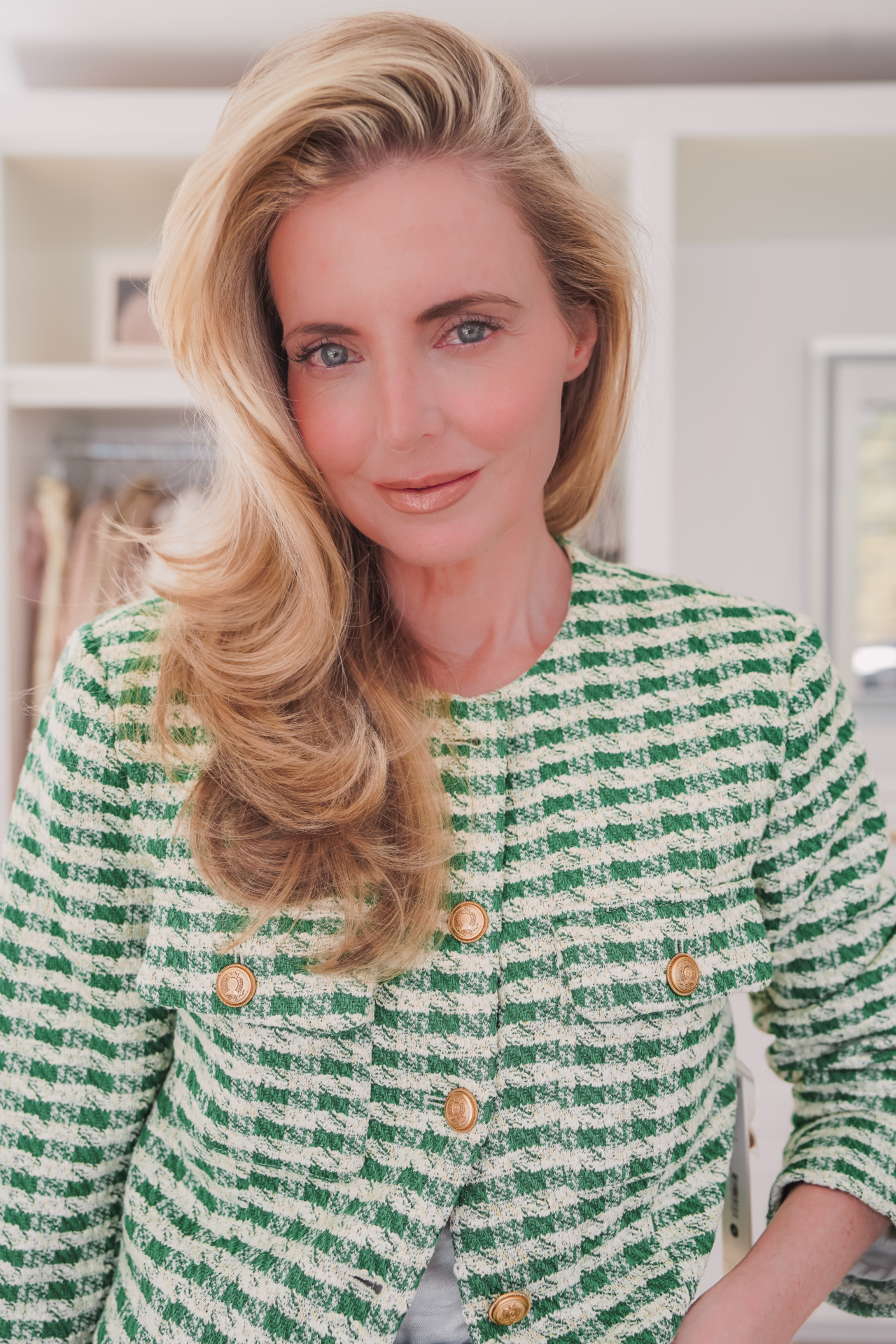
Combat Menopause Hair Loss
Another common menopause hair change is hair loss and shedding. There are a few routes you can take to combat this…
Take Biotin – This is a really common supplement you can take for your hair, skin, and nails. It’s likely that your daily multivitamin already has biotin in it so make sure to check that first. But as always, talk to your doctor before trying anything new. Biotin is tricky with thyroid medication, so again just talk to your doctor before taking it to make sure it’s right for you.
Additional Supplements – There are SO many options out there that claim to help with hair health. People really LOVE Nutrafol and have seen great results. I ordered one bottle, but couldn’t commit to the four pills per day. It felt like too much, but if you are open to trying it, it is highly rated and people say it really makes their hair grow and improves thinning and dullness! Another highly recommended brand is Wellbel.
Thickening Treatments – Basically…fake it til you make it. If you’re experiencing hair loss and need some volume, you can use products like thickening shampoo, thickening conditioner, thickening mousse, thickening serum…you get the picture! Multiple Team Busbee members use this Bumble & Bumble Thickening Spray and it really works! I’ve used it for years and swear by it. It’s not the ‘cleanest’ but for volume, I’ll make an exception.
Collagen – Collagen powder in my morning coffee has literally CHANGED my life!! I stopped taking collagen for about 6 months in order to try colostrum and noticed within a couple months that my bald patches along the hairline were back. I also noticed that my eyebrows had thinned out tremendously. I was actually kinda shocked by that. I resumed my daily 2 scoops of collagen and within a month, my brows are thick again and baby hair is growing to cover the thinning hairline. Consistency is key here. I would plan to use collagen every day.
Liquid collagen is pre-mixed and ready to drink. So it could be more convenient for some and it has the potential for faster absorption. Based on our research, the overall effectiveness of both forms (powder vs liquid) is considered the same. So it really boils down to personal preference.
Want to know how to improve your sexual wellness during menopause? Be sure to check out this post.
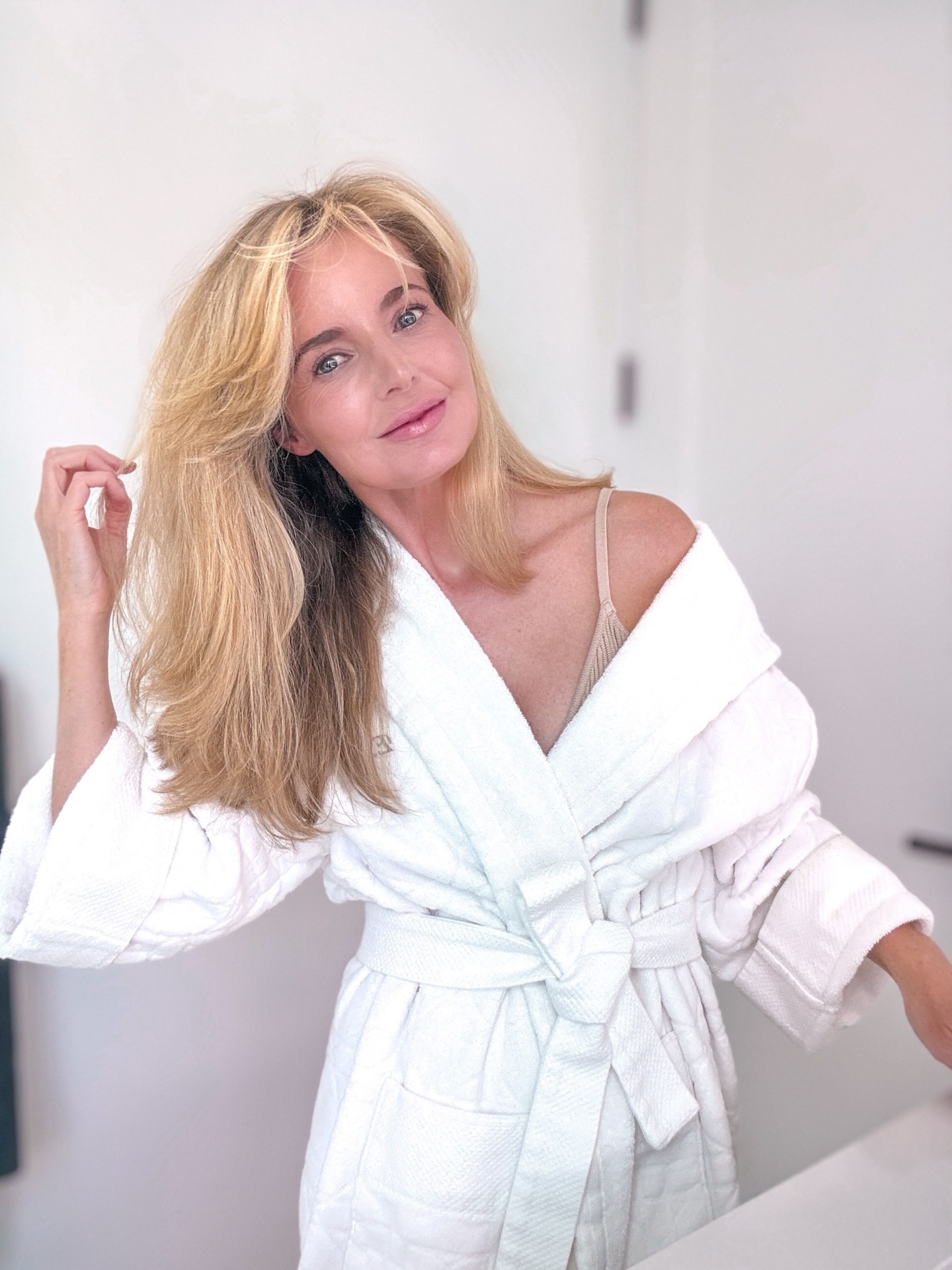
Be Gentle on Fine Hair
If your hair is already fine, damaged, broken, or brittle…be gentle with it. Make sure you switch your hairbrush to one that minimizes breakage and is gentler on your hair. This one has great reviews. If you like to wear your hair up, use silky, non-pull hair ties, and make sure to do a loose hairstyle so you aren’t straining your hair in a tight bun or ponytail.
Another way to take care of your hair is to get regular trims. Just like we need daily exercise to keep our energy levels up, regular trims are important to keep up with hair maintenance, hair growth, and getting rid of damaged ends. Make sure you get your hair trimmed every 6-8 weeks to reduce breakage and keep it healthy, growing, and thick!
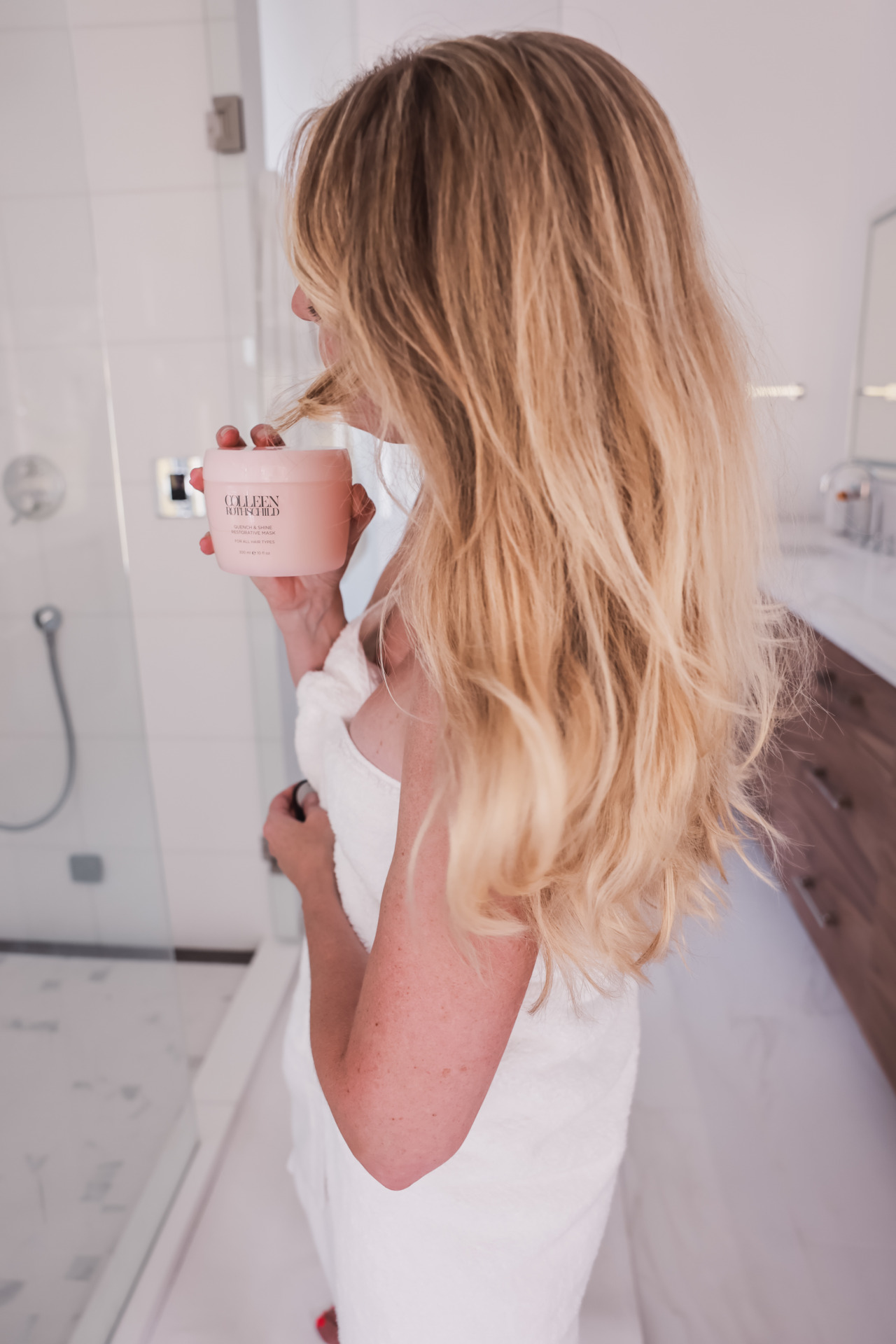
Treat Texture Changes & Dullness
Hair Masks – Hair masks can make a HUGE difference for your hair’s texture and shine. You should do a hair mask at least once a week. I really like the Obliphica hair mask and the Colleen Rothschild Restorative mask, but there are so many options out there. The team loves the Briogeo deep conditioning mask.
Good Shampoo & Conditioner – Make sure you’re using a good shampoo and conditioner. A few Team Busbee members love the Davines brand – each of their shampoo/conditioners tackles a specific problem. For example, I use Nounou shampoo/conditioner that treats brittle hair while another team member uses the Momo shampoo/conditioner that treats dry hair. Davines has a shampoo/conditioner for every type of hair from stick-straight to super curly hair. I also really like Colleen Rothschild’s haircare products and the highly-rated Olaplex shampoo and conditioner.
Don’t Use Too Many Products – I know…I’ve already offered a lot of advice that involves using different products. But keep in mind that using too many products at once can create build-up and weigh your hair down. If you do use a bunch of products, make sure that you have a clarifying or detoxing shampoo to help get rid of the buildup. I recommend something like Quai Detox Shampoo. If you want to DIY it, try adding a capful of apple cider vinegar to your regular shampoo.
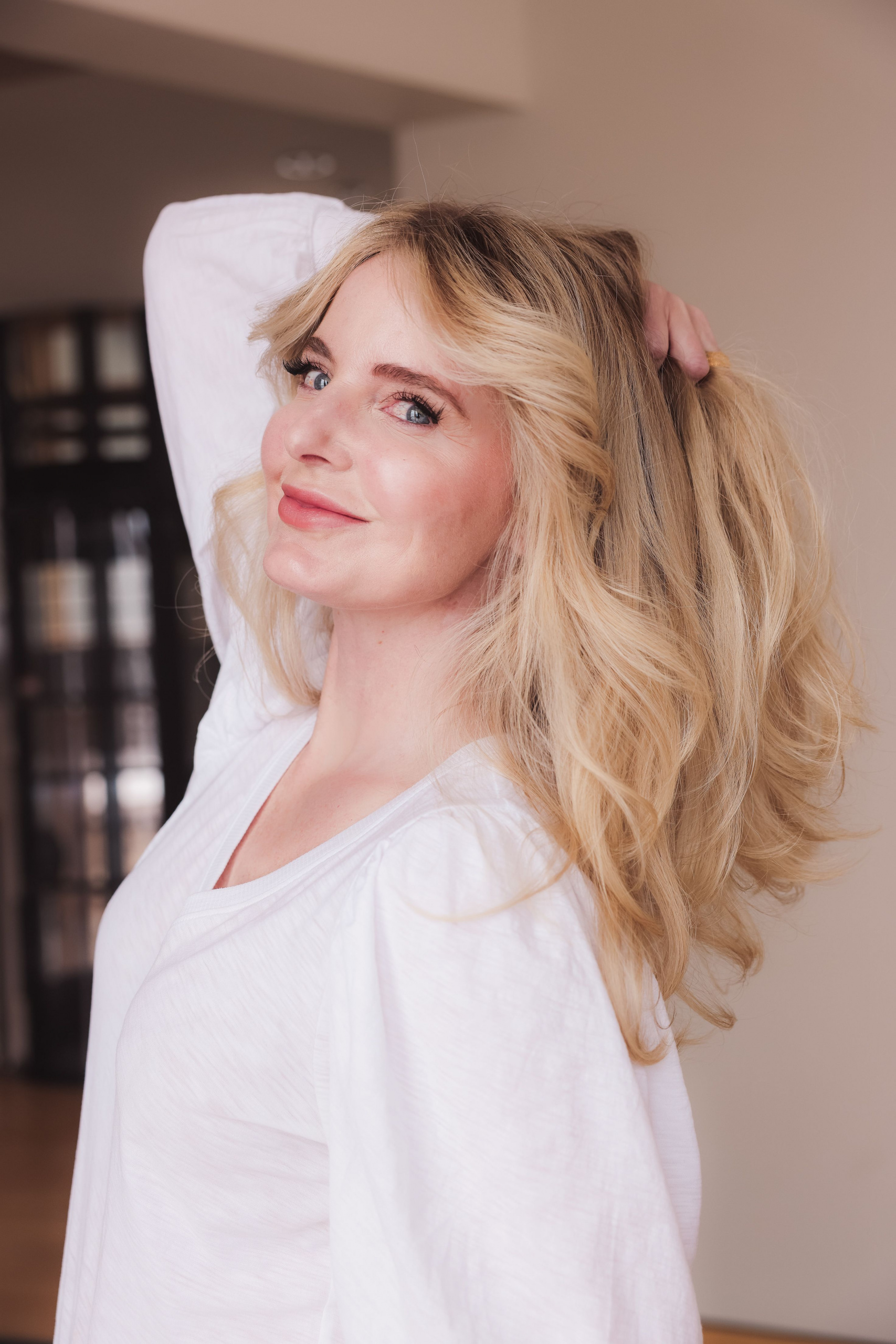
Treat Your Scalp
We’ve talked a lot about your actual hair but haven’t touched too much on the literal root of the issue…your scalp! An unhealthy scalp can affect hair and hair follicles. And one big hair change symptom for menopausal women is having an itchy and/or sensitive scalp. If you’re experiencing that, there are tons of scrubs and serums out there that you can try. The Divi scalp serum gets amazing reviews and a Team Busbee member said she loves it! I linked a few options below…
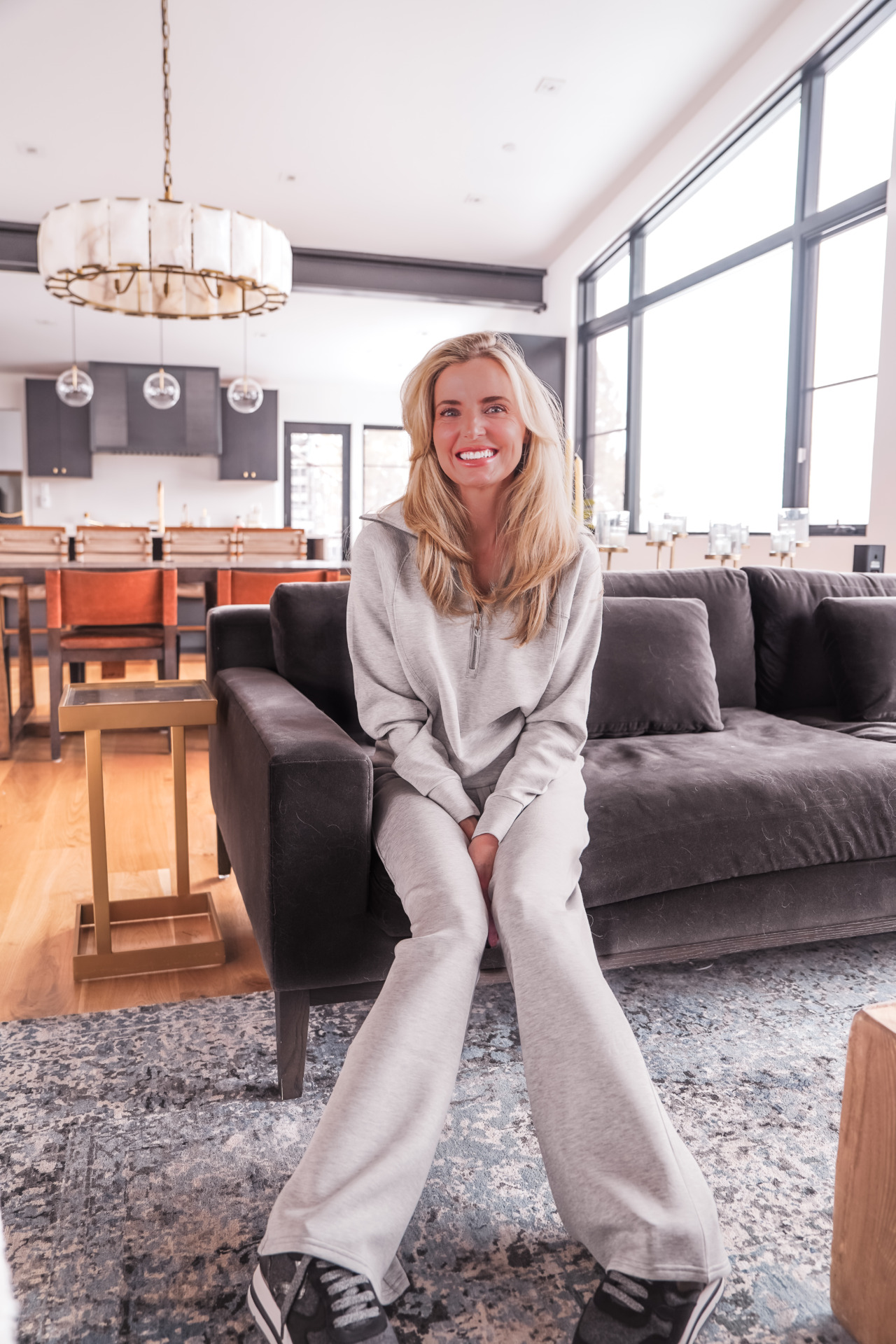
Seek Professional Help
Platelet-Rich Plasma (PRP) – Performed by a dermatologist, PRP is another option for those battling perimenopausal or menopausal hair loss. It’s a treatment that uses your own blood to stimulate hair growth. Your blood is drawn and then placed in a centrifuge to separate the platelets from the plasma. Those platelets are concentrated into a PRP and injected into the scalp. One of my good friends here in Telluride shared that she tried it 2 times with a 6-month growth cycle between treatments. She said she noticed a significant improvement in her hair growth not just along her hairline but her full head. She was very happy with the results but did say it’s quite painful.
Consult your medical provider – If you feel like you’ve tried everything or you’re just extremely tired of the frustrating symptoms of menopause, make sure you’re talking to your doctor and/or a menopause specialist! There are so many options out there now and you don’t have to suffer through it. It’s also worth noting that depending on your age, it’s important to make sure you’re on top of your thyroid health. After I had Elizabeth at 38 years old, my hair really thinned out. I thought it was just a post-pregnancy thing. Turns out, it was actually a problem with my thyroid. I had mild hypothyroidism and had to start taking T3 medication. That medication, in combination with collagen powder, helped regrow my hair.
Don’t forget, you’ll get instant access to our incredible Navigating Menopause resource by subscribing to the newsletter. This resource will answer a lot of questions and help you get started on your menopause care journey.


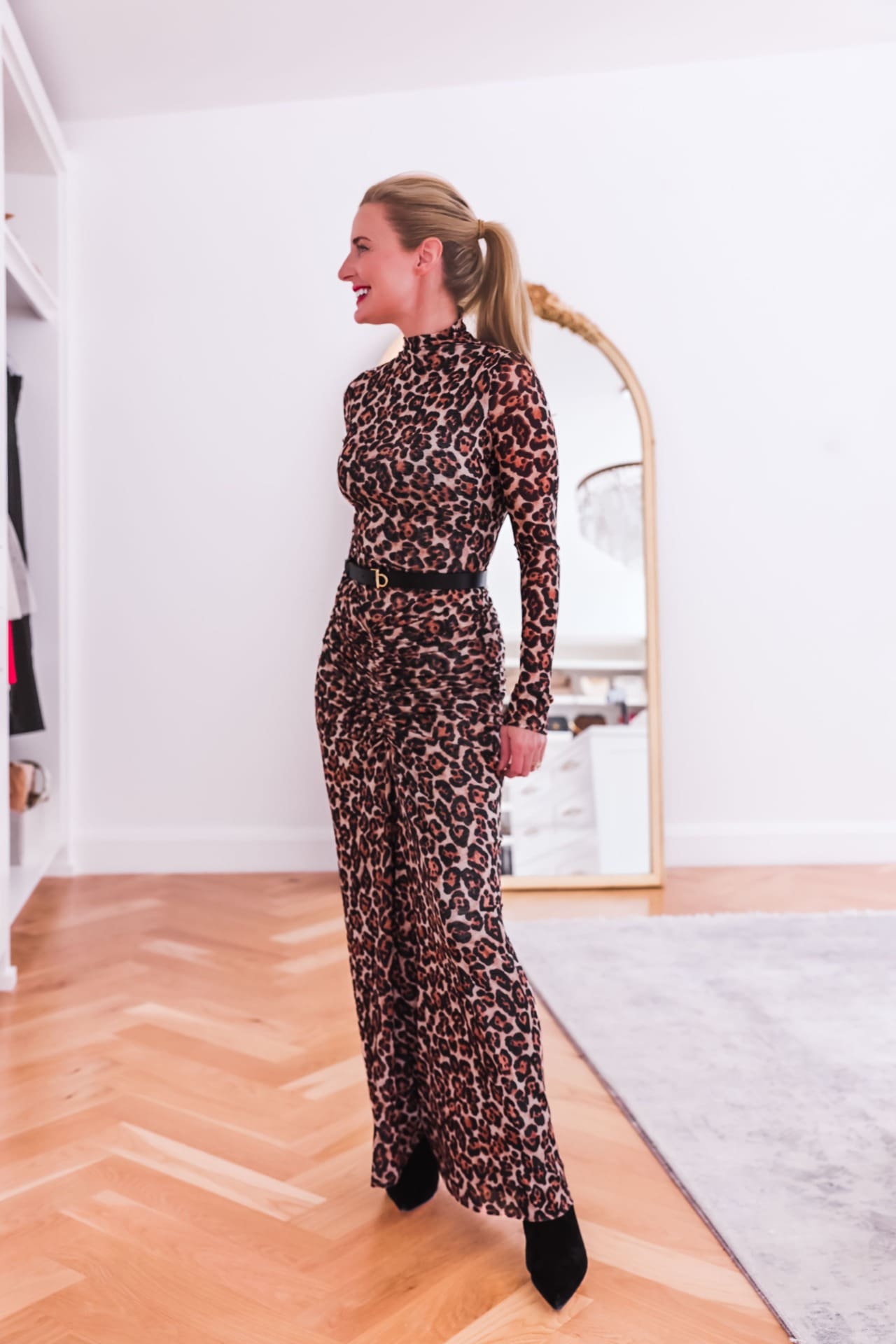
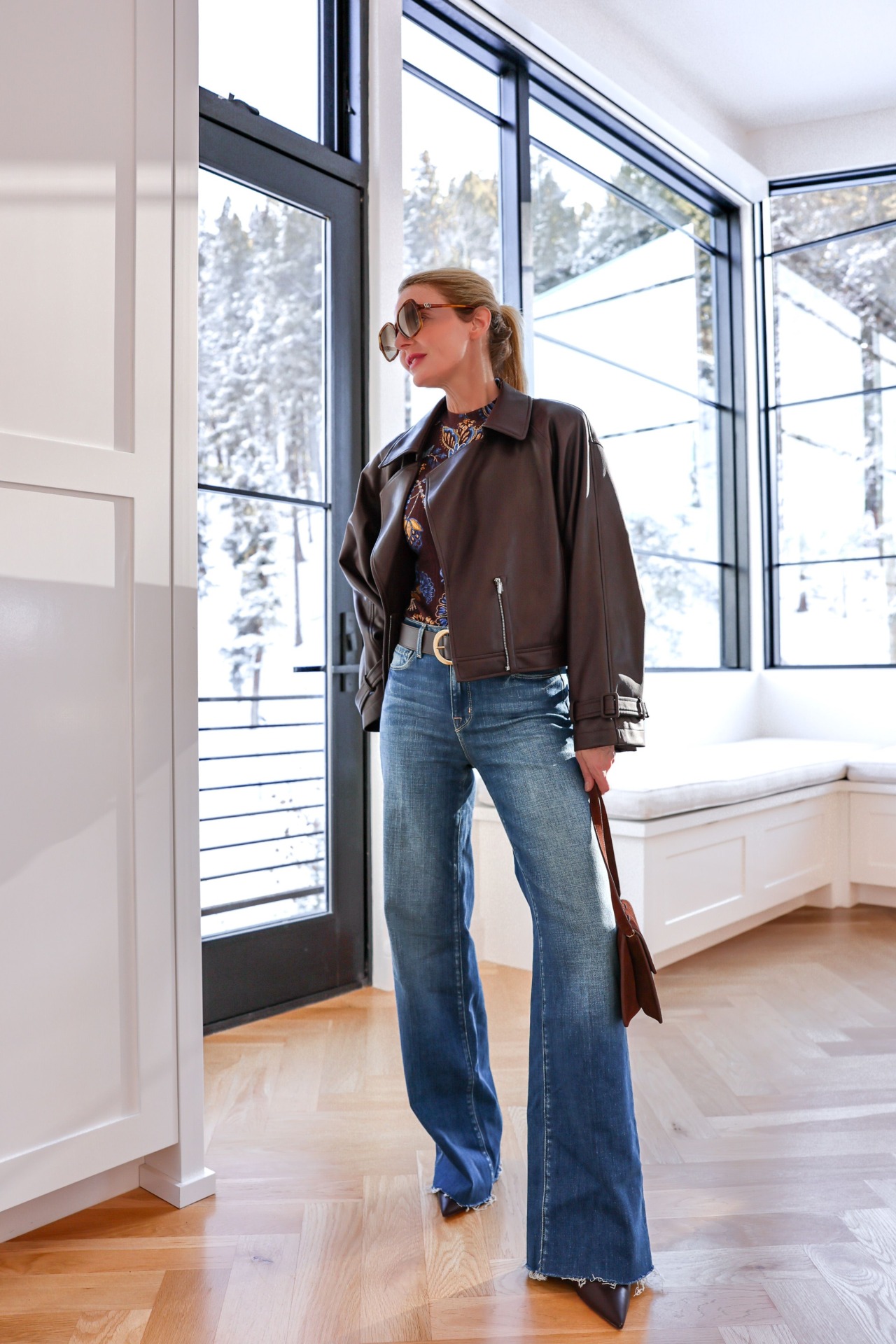

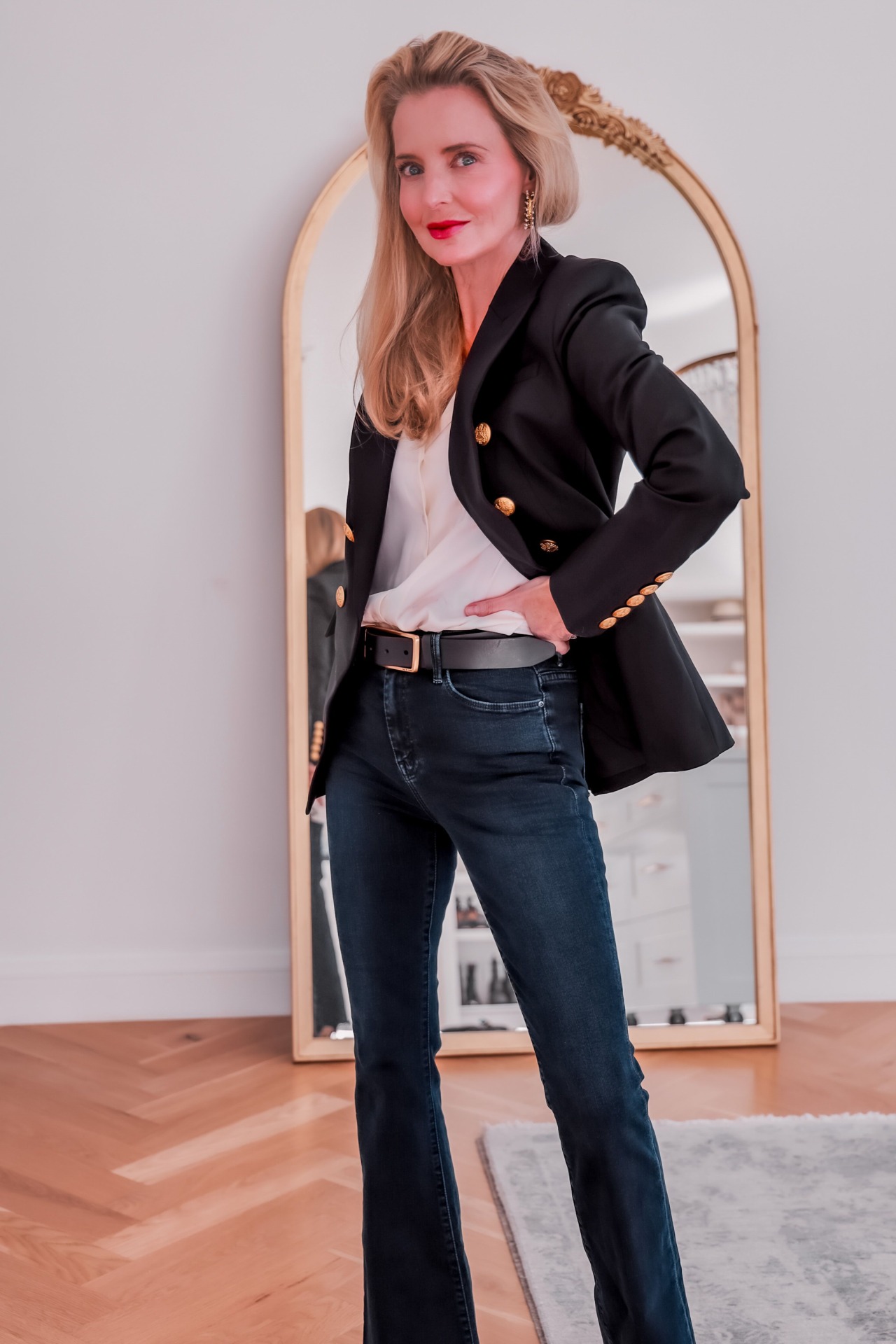
Thank you Erin and your team for another wonderful article. Menopause has been kicking my butt (literall?). I am also on thyroid medication so I get what you are going through but the hair loss has been the most difficult to manage. Thank you for your dow. To earth clothing tips and in general your love for women to take care of themselves AND live themselves.
Sending you SO much love and strength right now, Tricia. This journey is HARD, but you are not alone. Hope this tips offer some help to you! ~Team Busbee